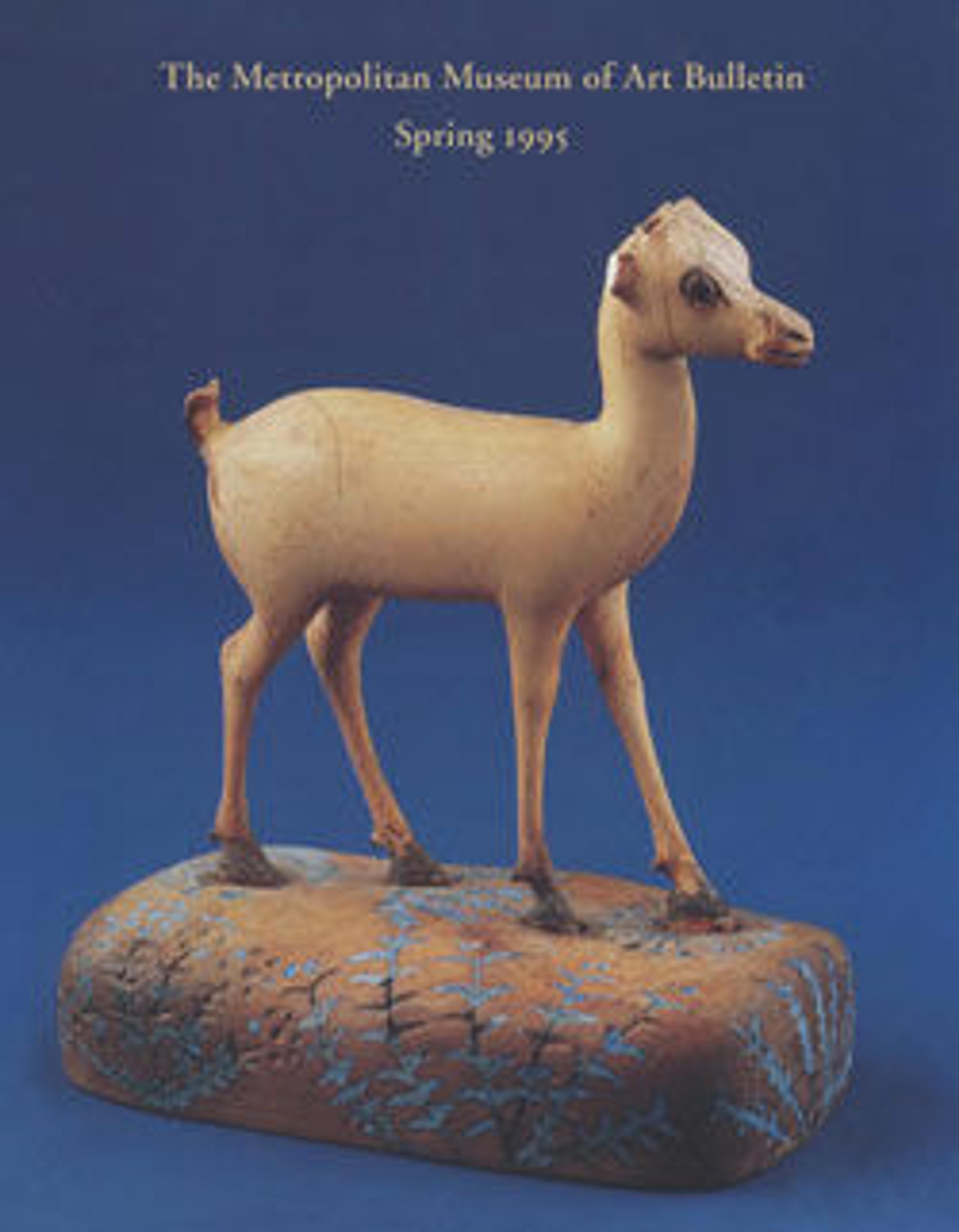Head of a Canid, possibly a Jackal
The classification of wild canids, for instance, the Egyptian jackal, Canis lupaster, and the wild dog living at the margins of the Egyptian desert, causes problems even for zoologists. It is not surprising, therefore, that the ancient Egyptians did not distinguish particular canid species in their representations of gods, such as the necropolis god Anubis; Duamutef, one of the four sons of Horus; or Wepwawet, the god of Asyut, a town in Middle Egypt. This sensitively modeled plaster head could have served to depict any of these deities.
The use of plaster and the rough, unmodeled area around the ears indicate that the head was cast in a mold. Recent research has shown that Egyptian artists used a variety of finely graded plaster materials for trial pieces and finished works of art.This small head is in a class with Old Kingdom "reserve" heads and the famous New Kingdom plaster portraits from an artist's studio at Amarna. In the latter workshop, mold casting was also practiced.
The use of plaster and the rough, unmodeled area around the ears indicate that the head was cast in a mold. Recent research has shown that Egyptian artists used a variety of finely graded plaster materials for trial pieces and finished works of art.This small head is in a class with Old Kingdom "reserve" heads and the famous New Kingdom plaster portraits from an artist's studio at Amarna. In the latter workshop, mold casting was also practiced.
Artwork Details
- Title: Head of a Canid, possibly a Jackal
- Period: Late Period
- Dynasty: Dynasty 26–30
- Date: 664–332 B.C.
- Geography: From Egypt
- Medium: Gypsum plaster
- Dimensions: H. 7.1 × W. 4.8 × D. 6.7 cm (2 13/16 × 1 7/8 × 2 5/8 in.)
- Credit Line: Rogers Fund, 1974
- Object Number: 1974.264
- Curatorial Department: Egyptian Art
More Artwork
Research Resources
The Met provides unparalleled resources for research and welcomes an international community of students and scholars. The Met's Open Access API is where creators and researchers can connect to the The Met collection. Open Access data and public domain images are available for unrestricted commercial and noncommercial use without permission or fee.
To request images under copyright and other restrictions, please use this Image Request form.
Feedback
We continue to research and examine historical and cultural context for objects in The Met collection. If you have comments or questions about this object record, please contact us using the form below. The Museum looks forward to receiving your comments.
